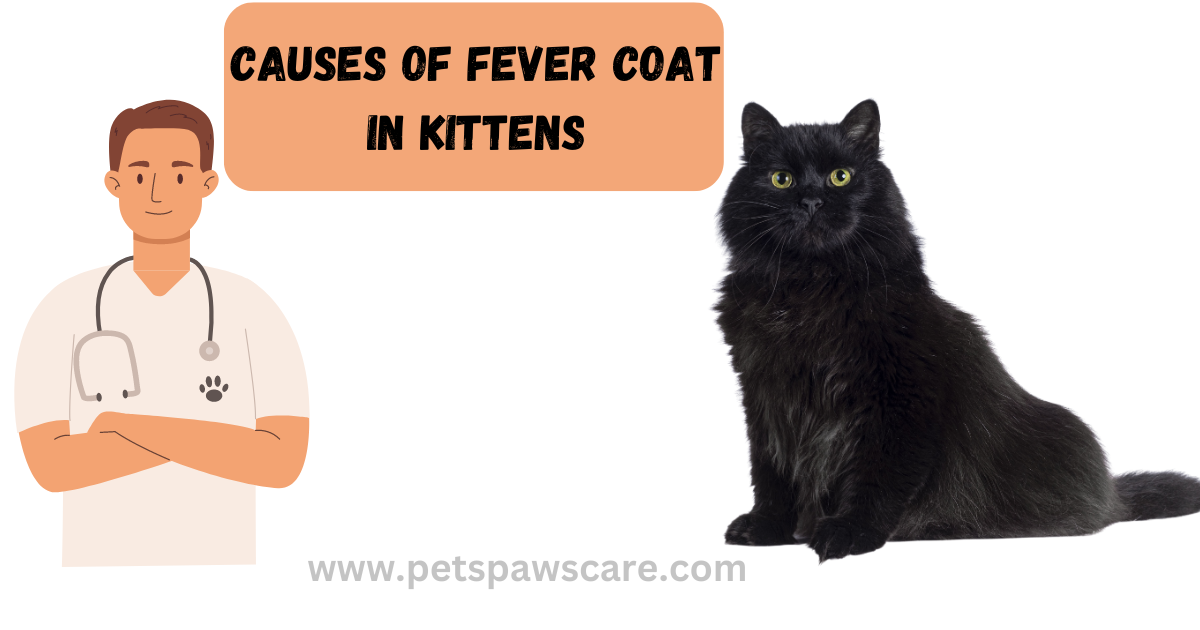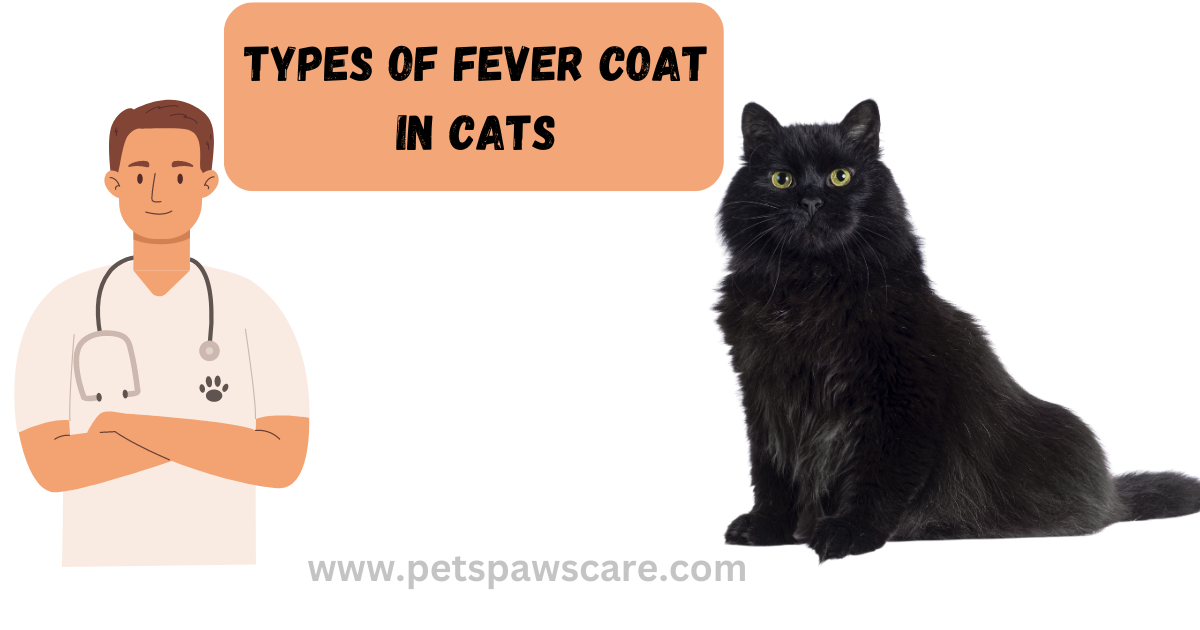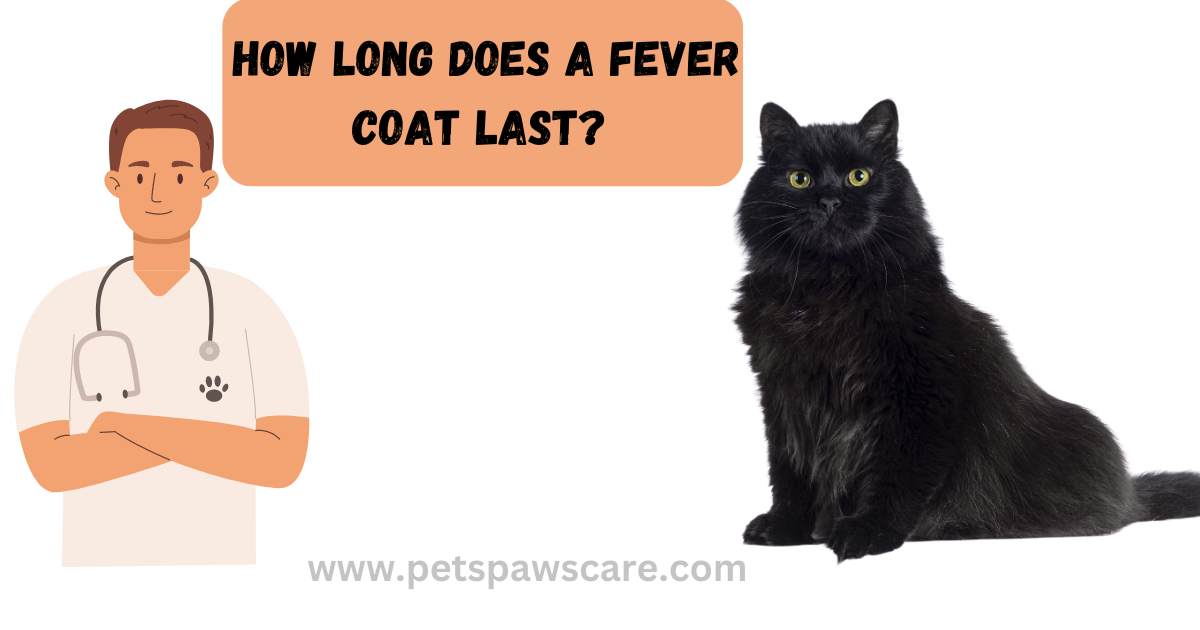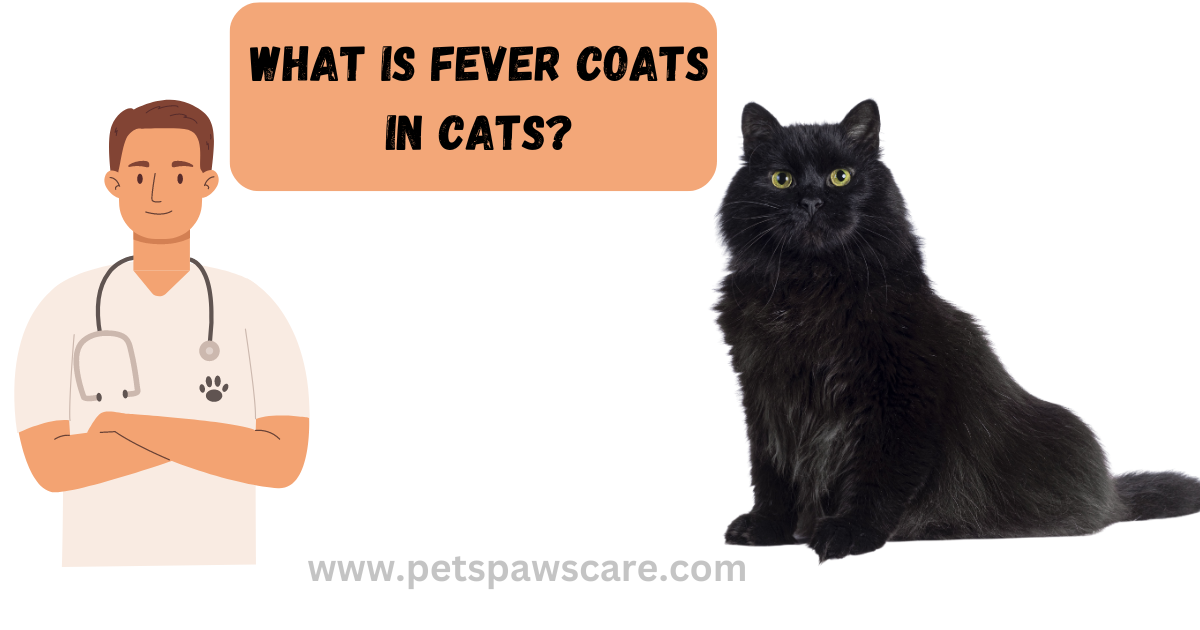What is a Fever Coat?
A fever coat is a temporary discoloration in the fur of some animals, typically seen in kittens and puppies, though it can also occur in other species. This condition happens when a mother animal experiences stress, fever, illness, or some form of trauma during pregnancy.
These factors can affect the development of pigment in the fur of the unborn offspring, leading to lighter or different fur colors than what would normally be expected based on their genetics.
For example, a genetically solid black kitten may be born with a grey, silver, or even cream-colored coat. This lighter fur is what is referred to as a fever coat. As the animal matures and the underlying pigment cells continue to develop, the fever coat usually fades away, and the animal’s true, genetically determined coat color emerges.
Fever coat itself is not harmful to the animal and doesn’t indicate any long-term health issues, but it can be a sign that the mother experienced some form of distress during pregnancy.
Pet owners must be aware of this condition, particularly when adopting young animals, as their appearance might change significantly as they grow older. Regular veterinary care can help ensure the mother and the offspring are healthy.
Also Read: What Does Ringworm Look Like on a Dog?
Causes of Fever Coat in Kittens

The causes of fever coat in kittens are primarily related to environmental and maternal factors that affect the mother during pregnancy. Here are the key causes:
- Maternal Stress: Stress experienced by the mother cat during pregnancy can disrupt the normal development of pigmentation in the kittens’ fur. This stress can be due to environmental changes, physical trauma, Allergy or emotional distress.
- Fever or illness: If the mother cat suffers from a fever or illness while pregnant, it can influence the kittens’ coat color development. The high body temperature or the illness itself may interfere with the proper pigment distribution in the developing fur.
- Nutritional Deficiencies: Poor nutrition during pregnancy can affect the health of the mother and, in turn, the development of the kittens. Nutritional deficiencies may lead to anomalies like fever coats, as the kittens may not receive the necessary nutrients for normal pigmentation.
- Medications: Certain medications the mother takes during pregnancy might affect the development of the kittens’ fur. Some medications can interfere with melanin production, producing lighter or differently colored fur.
- Genetic Factors: While external factors typically cause fever-coat during pregnancy, some genetic predispositions might make certain kittens more susceptible to developing a fever-coat if their mother experiences stress or illness.
- Environmental Factors: Extreme environmental conditions, such as unusually cold or hot temperatures during the mother’s pregnancy, could potentially influence the offspring’s development of a fever coat.
Types of Fever Coat

Fever coats can manifest in different forms, depending on the specific circumstances surrounding the mother’s pregnancy and the genetics of the kittens. Here are the primary types of fever coats observed in kittens:
Silver or Grey Fever Coat
- Appearance: This type of fever coat is characterized by a silver or greyish hue in the fur. Due to incomplete pigmentation, genetically black kittens may be born with a lighter, silvery coat.
- Development: The grey or silver fur typically darkens as the kitten matures, revealing the true black or darker coat underneath.
Cream or Pale Fever Coat
- Appearance: Some kittens may exhibit a fever coat that is cream or pale in color. This is often seen in genetically darker kittens that appear much lighter at birth.
- Development: The pale or cream-colored fur gradually deepens into the kitten’s intended color as they grow, revealing their true genetic pigmentation.
Patchy Fever Coat
- Appearance: In this type, the fever coat presents irregular, patchy areas of lighter fur against a darker background. The patches may be randomly distributed and can vary in size and shape.
- Development: Over time, the patchy areas blend with the rest of the coat as the true fur color emerges, often becoming more uniform.
Muted or Dull Fever Coat
- Appearance: This type of fever coat is less about a change in color and more about the overall dullness of the fur. The color appears faded, lacking the usual vibrancy and richness.Development: As the kitten matures, the dullness typically fades, and the fur takes on a more vivid and saturated appearance, reflecting the animal’s true genetic coat color.
Bluish or Smoky Fever Coat
- Appearance: Some kittens may develop a bluish or smoky hue to their fever coat, particularly those genetically predisposed to darker coats. This bluish tint is a result of incomplete pigmentation.
- Development: The smoky or bluish tones gradually give way to the true, richer coat color as the kitten ages.
Appearance and Characteristics
Physical Traits of a Fever Coat
- Coloration: A fever coat is typically characterized by a lighter, more subdued version of the kitten’s true fur color. For instance, a genetically black kitten may be born with grey, silver, or even cream-colored fur. This difference is due to an incomplete development of pigment during gestation.
- Pattern: The fever coat often lacks the uniformity and vibrancy in typical fur. The coloration may appear uneven, with certain patches being lighter than others, giving the coat a somewhat patchy or mottled appearance.
- Texture: Although the texture of a fever coat generally remains similar to that of normal fur, it may occasionally feel finer or appear more delicate.
Contrasts Between Fever Coat and Normal Fur
- Color Depth: Fever coats exhibit a noticeably lighter or washed-out color compared to typical fur’s rich, vibrant hues. This occurs because the pigment cells in the fur are not fully active, leading to a more muted appearance.
- Temporary Condition: Unlike the consistent and permanent nature of typical fur coloration, a fever-coat is transient. As the kitten grows, the fever coat gradually fades away, revealing the true genetic color of the fur underneath.
- Color Distribution: Normal fur tends to have a consistent, even distribution of color, whereas a fever coat can appear irregular and patchy, with varying intensities of color across different areas.
Variations Across Species and Breeds
- Species Differences: While fever coats are most commonly observed in kittens, they can also occur in other animals, such as puppies. The visibility and characteristics of a fever-coat can differ depending on the species, with some showing more pronounced changes than others.
- Breed-Specific Traits: The appearance of a fever-coat can vary significantly across different breeds. A fever coat may be less obvious in breeds where the fur is naturally lighter or more diluted. However, a fever-coat can stand out more distinctly in breeds known for their deep, rich coat colors.
- Fur Length Impact: The length and type of fur can also influence the appearance of a fever coat. In long-haired breeds, the transition to the true coat color may appear more gradual, while in short-haired breeds, the change can be more immediate and noticeable.
Also Read: How To Treat Dog Paw Infection At Home?
How Long Does a Fever Coat Last?

A fever coat is a temporary condition in kittens, and its duration can vary depending on several factors, including the kitten’s overall health, growth rate, and the extent of the discoloration. Here’s a general timeline:
- Early Life (Birth to 8 Weeks)
- Initial Appearance: The fever-coat is usually noticeable from birth. During the first few weeks of life, the kitten’s fur may appear much lighter or differently colored than what is genetically expected.
- Observation: During this period, the fever-coat is most prominent, as the kitten’s true fur color has not yet started to develop fully.
- Transition Phase (8 to 16 Weeks)
- Gradual Change: Around the 8-week mark, the fever-coat often begins to fade as the kitten’s true fur color emerges. The pigment cells that were underdeveloped at birth begin to function more normally, gradually darkening the fur.
- Noticeable Shift: When the kitten is around 12 to 16 weeks old, the fever-coat may become less noticeable, with the true color becoming more dominant.
- Maturation Phase (4 to 6 Months)
- Fading of Fever Coat: Most kittens will have completely shed their fever-coat by the time they are 4 to 6 months old. During this phase, the coat continues to darken and even out, revealing the true genetic color.
- Final Coat: By the end of this period, the kitten’s fur should fully reflect their true color and pattern, with little to no evidence of the initial fever-coat remaining.
- Full Adult Coat (6 Months and Beyond)
- Completion: After six months, the kitten’s coat should be fully developed, and the fever-coat will have disappeared entirely. The color and texture of the fur will now match the kitten’s genetic predisposition with a rich, uniform appearance.
Fever Coat is dangerous for my cat?
No, a fever coat is not dangerous for your cat. A fever-coat is a cosmetic condition that results from factors affecting the mother cat during pregnancy, such as stress, illness, or nutritional deficiencies. It does not indicate any inherent health problems in the kitten itself.
The fever coat is a temporary condition that will gradually fade as the kitten grows, revealing its true fur color. It’s important to note that while the fever-coat is harmless, it can be a sign that the mother cat experienced some stress or illness during pregnancy.
However, this does not typically affect the kitten’s health.
If your kitten is otherwise healthy, eating well, and growing normally, there’s no need to worry about the fever-coat. Regular veterinary check-ups will help ensure your kitten is developing properly and address any other potential health concerns.
What Food Should I Give To My Cat During Fever Coat?
During a fever-coat, it’s important to provide your cat with a diet rich in high-quality wet food that includes protein sources like chicken, salmon, or duck. Wet food is easier to digest and keeps your cat hydrated, which is crucial during this time. Incorporating Omega-3-rich foods, such as those containing salmon or mackerel, can help improve skin and coat health.
Offering low-sodium chicken broth or homemade meals with cooked chicken and a bit of fish oil can also support their overall well-being. Always consult your vet for personalized advice to ensure your cat receives the best care.
Conclusion
Understanding a fever coat in kittens is important for any pet owner. While it might initially seem concerning, a fever-coat is a temporary and harmless condition that usually fades as the kitten matures. It reflects the influence of certain factors during the mother’s pregnancy but does not indicate any long-term health issues in the kitten.
Ensuring regular veterinary check-ups and providing a healthy environment can help your kitten grow into its true fur color and enjoy a healthy life. Always consult your veterinarian if you have concerns about your pet’s well-being.
Disclaimer: The information in this post is meant for general knowledge and should not be taken as medical advice for pets. Please consult your veterinarian for a proper diagnosis of your pet’s condition.
